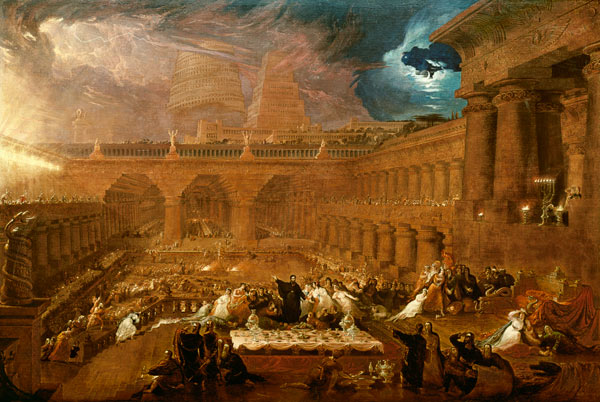'A new elite is needed to manage the bewildered herd.'
-Adam Curtis, The Century of the Self
Sigmund Freud, one of the most influential Psychologists in history, at the turn of the 20th Century coined the term Psychoanalysis, a new theory of human nature, highlighting hidden primitive sexual forces and animalistic instincts which need controlling. Freud stated in his various works published between 1899 and 1939 that society represses our natural urges unconsciously and our desires are buried deep in our subconscious, believing in a fundamental tension between civilisation and the needs of the individual. Living through the turn of the century at a time, with the rise of industrialisation and capitalism Freud interpreted the first world war as a social eruption, the result of centuries of repression of human desires.
Freud's nephew Edward Bernays, was a press agent and propaganda officer who after World War 2 set up 'The Council of Public Relations', the birth of PR, based off his uncle's ideas of the Pleasure Principle, which Freud argued is what makes us 'happy and content'. Bernays was employed by cigarette companies to encourage young women to smoke, a contrast to the social taboos of the time. To achieve this he hired women to walk in the 1929 Easter Day Parade as Debutantes and smoke cigarettes in from of press photographers. Berney;s wanted to paint the women walking in the parade as 'suffragettes' lighting up 'torches of freedom'. As a result, cigarette sales went up and today cigarettes are universally associated with desire and glamour, proving that by linking products to desires, you can make people behave against their interests. Bernays used Product Placement, Celebrity endorsements and Pseudo-Scientific reports to promote products.
All this was happening at a time of mass production, with the rate of production in the US rising exponentially. Mass production on this scale lead to mass commodification, which eventually lead to a crisis of overproduction and oversaturation of the market. To combat the arbitrary identity given to commodities in an oversaturated marketplace, individual brands emerged, giving an identity to commodities, making them more desirable to the consumer. Early consumerist branding focused on the merits of products, however over time the focus shifted to how a product can appeal to your individual desires. An early example of this would be Henry Ford's "Ford Cars' which were marketed as a sort of status symbol, beginning this sort of cultural myth of cars as a symbol of power and success which persists to this day.
From then on Advertisements focused more on the idea of the product rather than the action function, driven by the need to shift more products in a market oversaturated with different lifestyle brands. Freud's theories describe this as a shift from a 'needs culture' to a 'desires culture', a culture in which people associate different brands and products with success and power. Vance Packard broke the way in which advertisers do this in his book 'The Hidden Persuaders'.
Packard states that advertiser's push their products upon consumers by selling...
- Emotional Security
- Worth and reassurance of status
- Ego Gratification
- Creative Outlets
- Love Objects
- A sense of power
- A sense of roots
- Immortality
Consumerism is an ideological project that emerged in the early 20th century as a form of social control. Political commentator Walter Lippman wrote in the 1920s that politicians are incapable of managing society in the 20th century, and that it was the job of PR people to advise those in power how to persuade people to follow their ideological beliefs. In 1940, at the height of the Second World War, Bernays was put in charge of marketing America's technological and cultural dominance at the World's Fair, a centrepiece 'Democracity', a city of the future which would solidify America's superiority over other ideological superpowers such as Nazi Germany and the Soviet Union. This 'city of the future' was nothing more than PR for Capitalist products, funded by big business manufacturers, in an attempt to market their consumerist ideology in response to the rise of socialist ideas in hopes to quash them.
On a personal note, I am more than familiar with the work of Adam Curtis, the documentarian behind 'The Century of the Self'. I find his work both inspiring and incredibly well informed. This sort of anti-consumerist ideology is something I would like to touch upon in my own work at some point in time as I agree quite strongly with people like Curtis on the subject. Freud's ideas as well, particularly regarding psychoanalysis, appeal to me creatively. Overall, I found this lecture to reaffirm a lot of the points made in Century of The Self, and found it to be very inspiring for my own work. Personally, I do not feel there is enough subversive, anti-consumerist animation out there, so it's definitely something I could see myself touching upon in the future.
On a personal note, I am more than familiar with the work of Adam Curtis, the documentarian behind 'The Century of the Self'. I find his work both inspiring and incredibly well informed. This sort of anti-consumerist ideology is something I would like to touch upon in my own work at some point in time as I agree quite strongly with people like Curtis on the subject. Freud's ideas as well, particularly regarding psychoanalysis, appeal to me creatively. Overall, I found this lecture to reaffirm a lot of the points made in Century of The Self, and found it to be very inspiring for my own work. Personally, I do not feel there is enough subversive, anti-consumerist animation out there, so it's definitely something I could see myself touching upon in the future.







